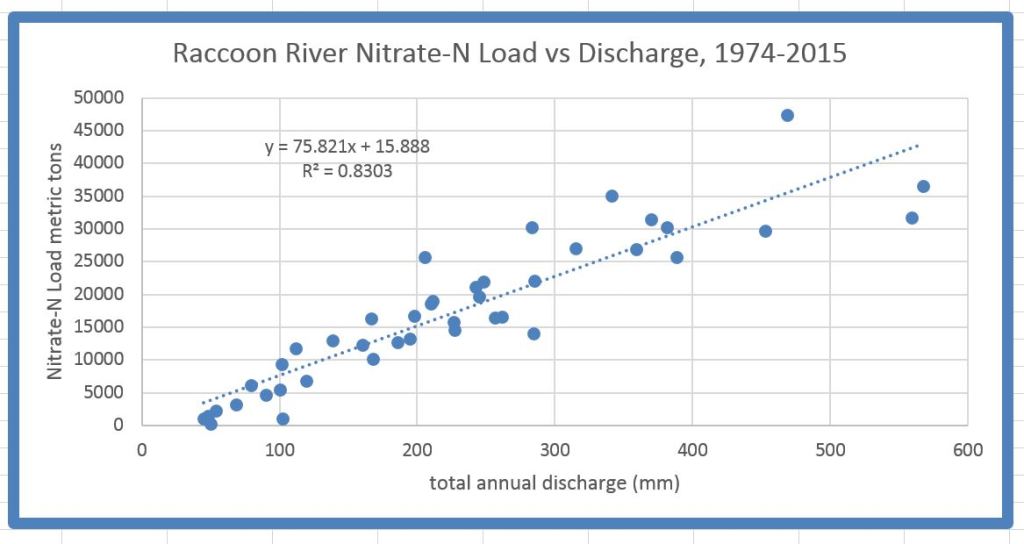What might climate change mean for stream nitrate loads? In the Raccoon River watershed, precipitation has increased about 25% since 1916. This, coupled with land use change (artificial drainage and conversion of native perennial plants to annual crops) has increased average streamflow (discharge) in the river about 250% over the same time period (Figure 1). Thus we know that the relationship between precipitation and discharge is not linear, i.e. 100 mm of increased precip can produce far more than 100 mm of increased discharge (normalized to watershed area).
We also know that the relationship between nitrate-N loads and river discharge is nearly linear (Figure 2), i.e. if discharge doubles, nitrate loads will likely double, on average. This is what we call transport limitation. Our soils contain so much nitrate (essentially saturated with this nutrient), the amount that gets into the stream network is mostly dependent upon the amount of water traveling through the soil profile.
So if Iowa continues to get wetter, which many climate experts predict, relatively modest increases in precipitation could result in disproportionately large increases in nitrate-N loads. Another 25% increase in annual average precipitation (i.e. from 800 to 1000 mm) could double river discharge (normalized to watershed area) from 150 mm to around 300 mm and nitrate loads from about 11,000 to 23,000 metric tons. Any discussion of nitrate trends should consider closely these possibilities in the context of climate change.

